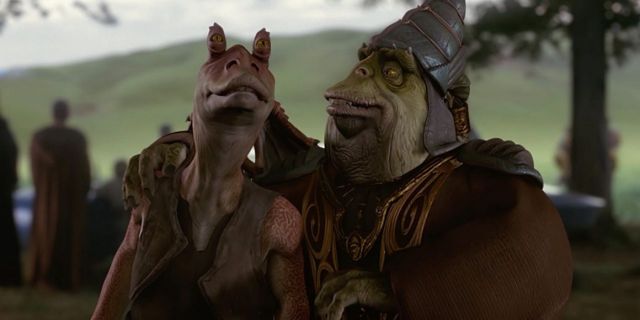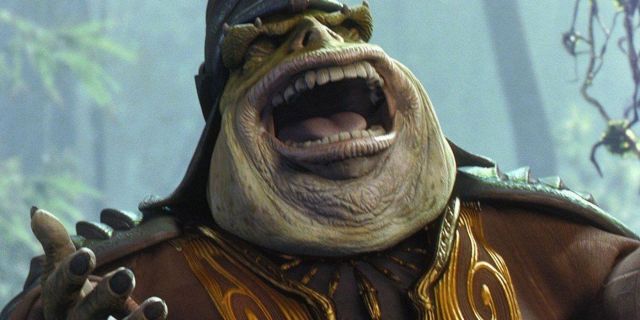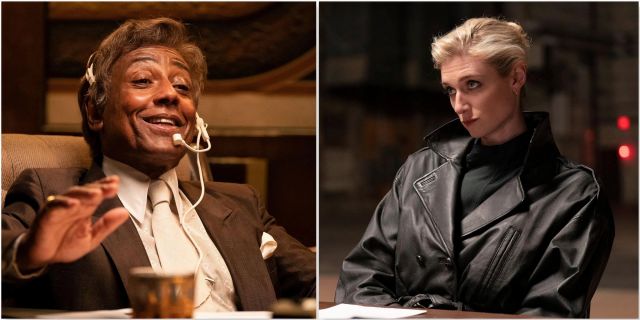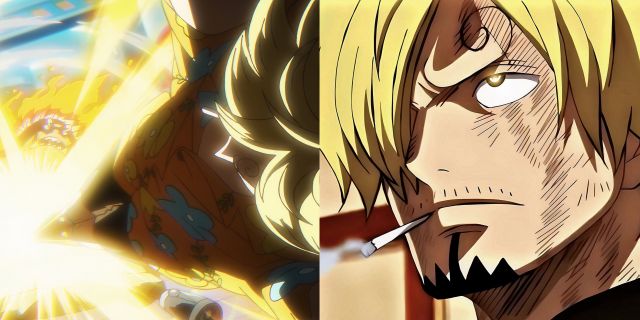When people hate a piece of media, they often lay the blame on a single element. A bad movie rarely comes down to a single decision, but one story detail, writing choice, or character can represent the structural failures of the larger work. Star Wars: Episode I – The Phantom Menace struggles with many significant issues, but Jar Jar Binks carries the weight of every other poor choice. His species, the Gungans, deserve more respect than their most notable representative.
Alien designs in Star Wars remain among the most iconic in science fiction. This is a double-edged sword because the awful examples stick in the cultural memory as long as the great ones. Characters like Watto have become notable for their bizarre appearance, irritating voices, and questionable inspirations. Gungans are the ideal example of this phenomenon, prompting Star Wars fans and critics to break out the old Jar Jar impression just as quickly as they’d say “May the Force be with you.”
What are Gungans?

Gungans are a species of bipedal amphibians indigenous to the planet Naboo. They come in two races, which enjoy vastly different physiological traits. The Otolla, best represented by Jar Jar Binks, are lanky with long limbs and slender torsos. Otolla eyes sit on short, retractable stalks. Their skin was typically orange or pink, with white patches on their faces, torsos, and arms. Otolla Gungans also featured prominent duck-like bills, partially inspired by the Hadrosaurus dinosaur. The Ankura, the other notable Gungan race, sported much stockier builds. They had no eye stalks, and their bills were small enough to resemble humanoid mouths. Ankurans were typically green. Both races tend to be over six feet tall. They both sport halilus, which are distinctive, fin-like ears. Otolla halilus are much longer and more prominent. While the Otolla are generally better known throughout the galaxy and would represent the species’ typical description, the Ankurans are the older race.
Both races of Gungans live in underwater cities like Otoh Gunga. Gungan young are born as tadpoles but develop lungs as they mature. They can hold their breath for long periods, complementing their bodies’ many aquatic enhancements. Gungans have no bones, instead sporting a cartilaginous skeletal system. Their legs are powerful, letting them swim quickly and efficiently. Gungans secrete a hydrophobic mucus that helps them glide through water. They can also spit that liquid to extend the same benefit to other beings. Their muscular tongues allow them to hunt and consume their favorite prey, which includes raw mollusks and smaller amphibians. Gungans can live in or around salt or freshwater or survive in dry environments. Their physiology flawlessly suited their home without ruling out other potential living situations. Aside from the occasional mockery, Gungans can live anywhere other species can survive.
What are Gungans known for?
Gungans typically spend their quiet lives on Naboo. Innately in tune with nature and culturally aware of the Living Force, Gungans value their local ecosystem highly. They rarely leave home, ensuring their influence on the Galaxy stays minimal. Naboo featured a strange system of laws. They valued peace and pursued it through any means necessary. Small infractions led to severe punishment, including exile or execution for misdemeanors like vandalism. Though their state shunned any violence they didn’t commit, Gungan culture was heavily militaristic. Every city-state assembled an army, leading to frequent struggles for territory. Their mightiest force was the Gungan Grand Army, which fought in the Battle of Naboo. Most Gungan weapons feature natural elements, such as plasma energy gathered from Naboo’s crust. They were proud and fierce warriors but typically only fought to defend Naboo.
Notable Gungans in Star Wars

Jar Jar Binks is the most iconic Gungan in Star Wars. Jar Jar left Naboo after an unfortunate submarine crash earned him an exile. After a chance encounter with Qui-Gon Jinn and Obi-Wan Kenobi, Binks redeemed himself in the eyes of Naboo by helping to negotiate a treaty. Human Queen Padmé Amidala summoned the Gungan Grand Army to fight off the Trade Federation’s droid army. Binks earned a general position in the military for his help. Padmé later appointed Jar Jar a Junior Senator representing Naboo. He would later propose legislation to give Supreme Chancellor Sheev Palpatine the power to raise a Grand Army. His lack of experience, intelligence, and political savvy made him an easy target for manipulation. His actions sparked the Clone Wars, which led to Order 66. Jar Jar supported the Petition of 2,000, which failed to stop Palpatine’s rise. He suffered a second exile after Palpatine established the Galactic Empire. Jar Jar Binks lived out his final years as a clown, entertaining children on the streets of Theed. Other notable Gungans include:
- Boss Rugor Nass: The leader of the Gungan High Council during the Battle of Naboo. Boss Nass exiled Jar Jar. He believed in maintaining separation between humans and Gungans on Naboo. Queen Amidala changed his mind, leading him to commit his army to fighting the droids.
- Roos Tarpals: A military leader in the Battle of Naboo who later gave his life defending his planet from General Grievous in the Clone Wars.
- Thaddeus Wolk: A leading scientist and professor known for huge strides in theoretical hyperspace physics. He instructed a student who used his theories to aid the Nihil pirates.
- Roo-Roo Page: A rare Force-sensitive Gungan. Darth Sidious hired bounty hunter Cad Bane to steal the Gungan toddler, but Anakin Skywalker and Ahsoka Tano saved her and arrested him.
Gungans are a simple, ecological people known for their commitment to their home planet. The reputation of Gungans suffered massively through Jar Jar Binks’ actions. Though he wasn’t personally responsible for the Empire, his example enforced the usual tradition of staying on Naboo. Fans and in-universe characters feel similarly about this ill-fated species.











Leave a Reply